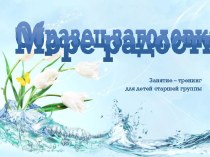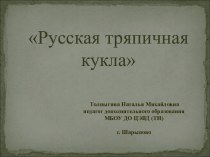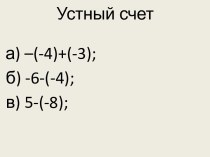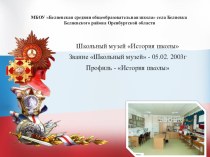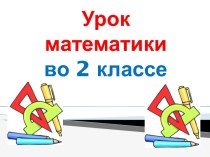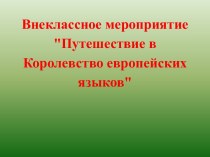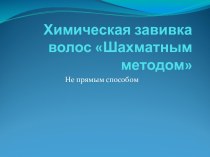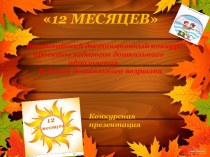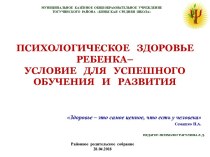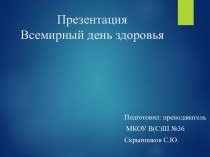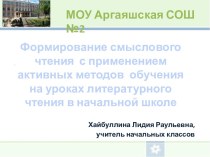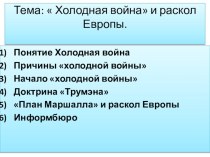Слайд 2
Compulsory education in Poland
Obligatory one year of pre-school

preparation in age of 6 (obowiązek przedszkolny)
Compulsory education, age
7-18, two legal concept introduced in educational law:
obligation to attend school (schooling obligation - obowiązek szkolny) - from age 7 till the end of lower secondary school before reform 2017-2019 (primary 1-6 classes+ gimnasium 1-3 classes) and after reform till the end of 8 class primary school
obligation to study (education duty - obowiązek nauki) - after completing basic education (6+3 or after reform 8 classes primary school) up to age of 18
Compulsory education is not fulfilled if:
- no enrolling into the pre-school or school at all
- absence higher than 50 % of lessons per month without relevant not justification
If compulsory education is not fulfilled:
- head teacher is obliged to react: written warning/admonition to parents or legal guardians
- local authorities are entitled to demand the fulfilment of the obligation (under the threat
of a fine)
- if no improvement - the case should be reported to the Family and Juvenile Court.
Слайд 3
Roma people in Poland - characteristics
Roma people are

recognised in Poland as an ethnic minority
Census ‘11
–
16,723 people declare Roma origin (est. 20,000-25,000 people)
Age group of 0-9: 2,689 (16,08%) people
92 % of Roma = urban population = no problems with access to public services, including education; relatively evenly dispersed around the country,
No “Roma classes/schools” or majority of pupils of Roma origin in one class, no Roma settlements, so no problems with segregated education, or low quality education for Roma pupils
Very traditional groups (Polska Roma, Lovari, Kelderari – sedentary since ’60 XX cent.; Bergitka Roma - less traditional, sedentary for ages):
Roma language used at home so fluency in Polish is weaker comparing with non-Roma peers,
low education level in families so no support from family members,
low education aspiration as the formal education is not a real value,
relatively low age of marriage and first pregnancy,
lack of trust towards state’s institutions.
Слайд 4
Level of education of Roma people in Poland
– census’11
Слайд 5
System of support of Roma pupils in Poland
Roma

educational assistants/mediators (92 people working in school year 2016/2017),
supporting
teachers (approx. 100 people),
additional compensatory lessons, accordinglto the needs,
a network of integration dayrooms rund by schools, to which Roma pupils attend,
a network of approx. 50 additional dayrooms run by Roma NGOs all over the country,
free: school transportation, meals at school, textbook and school equipment, insurances, etc.,
scholarship system for all levels of education:
primary education (with gimnasium) – for talented pupils (on the basis of application, system financed by state and administrated by a Roma NGO),
secondary education – available for all pupils of Roma origin (on the basis of application, system financed by state and administrated by a Roma NGO, in practice: for all applicants),
tertiary education – available or all students of Roma origin (on the basis of application, system financed by state and administrated by a Roma NGO, in practice: for all applicants )
Слайд 6
Data on: kindergardens, primary and secondary schools from
the System of Educational Information (SIO), on tertiary education:
numbers of scholarships
Roma pupils in different levels of education in Poland
Слайд 7
Roma pupils education in Poland – (rather) challenges

enrolment of children into preschool education is improving, taking
into account the fact that among traditional communities giving a child to the “gadje” institution is perceived as inappropriate and mother can be judged as “lazy” (does not want to take care of her child),
enrolment into basic primary education (1-6) seems to be a success (90/95% - 100 %),
the gap starts with gimnasium (age 12-14) when “ marriage” becomes an option:
- parents want to avoid „traditional hijack” – so girls are not allowed to go to school
- or parents want to have their children traditionally married,
secondary education - serious under-represention of Roma pupils,
tertiary level – Roma students underrepresented; partially, the students originated from mixed Polish-Roma families (not from “typical” Roma community),
higher education is not perceived as an achievement ,
according to the tradition – graduated are still relatively “young” so no right to speak in front of elderly, no appreciation of higher education gives no motivation to study (no increase in social status within the community)
no influence of well educated Roma on the local community,
nonetheless they can serve as “role models”.
Слайд 8
Any success/progress in the field of Roma people
education in Poland since 2001?
Roma educational/school assistant is an
official job/profession (since 2004), hired as full time job by local authorities (responsible for education) on regular basis; established network of Roma educational assistants; a set of training provided by Association of Roma Educational Assistants in Poland in cooperation with regional authority
Diminishing level of enrolment into the special school system (approx. 10 %)
Слайд 9
Secondary vocational education of Roma pupils
in Poland
(a little bit of optimism) 1/2
Roma pupils on
the secondary level - the vocational schools seem to be much more popular than general high schools
Слайд 10
Secondary vocational education of Roma pupils
in Poland
2/2
Within the vocational education - the Basic Vocational
Schools (2 or 3 years, no high school certificate - matura) are more popular than Technical Colleges (4 years, high school certificate - matura)
Слайд 11
Conclusions
It is expected that the current reform of

the Polish education system from 6+3+3 into 8+4 will
limit the drop outs among Roma teenagers,
family environment (habit, conditions) is not “education friendly” – the Roma NGOs may help in this area, their role should be improved,
nonetheless, the attitude towards education slowly changes in some communities - according to independent evaluation of the governmental “Roma Programme 2004-2014” - Roma people perceive school more and more as the basic integration centre and the only friendly & safety public institution (!),
“standard” working methods of school and local authorities are not successful in case of these communities as their culture and situation is different – tailored methods are needed
systemic infrastructure is needed - financial, legal and organisational - to reach significant improvement of education situation of Roma people (no “project to project” approach, but stable financial support for local authorities to ensure Roma educational/school assistants, scholarships, free kindergartens, etc.),
poverty is not the only obstacle in school enrolment and continuation of the education,
vocational education should be promoted to attract Roma youngsters as it gives chance for economic independence, enable to bring money home at the early stage and can be first step for family business establishment in the future.





















